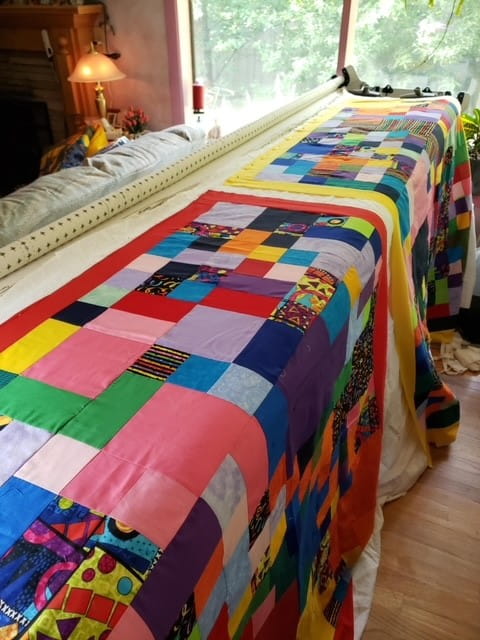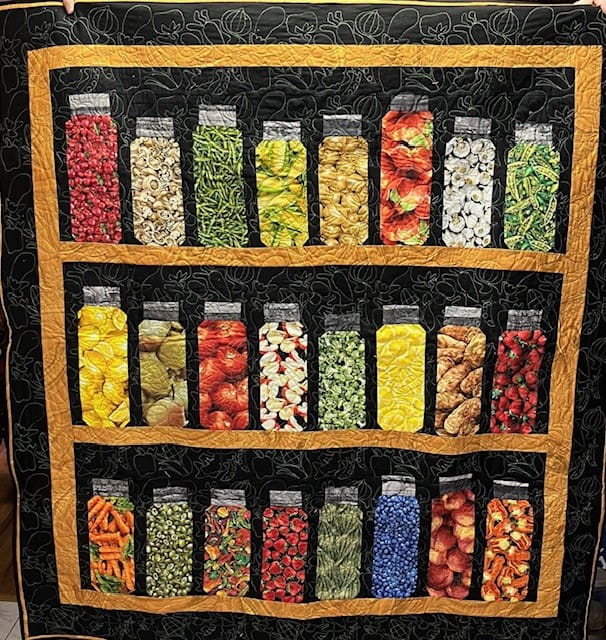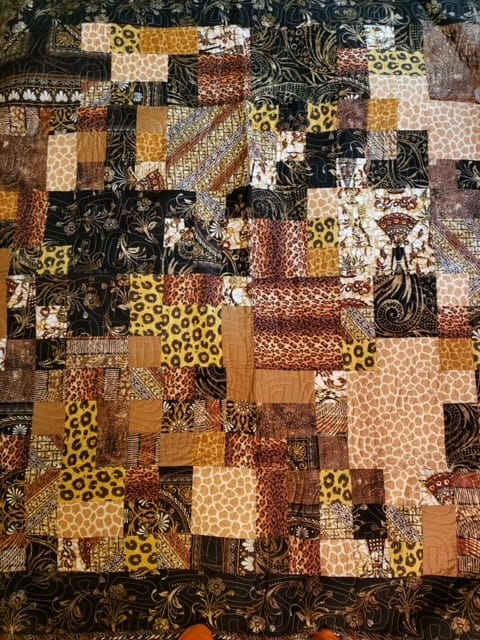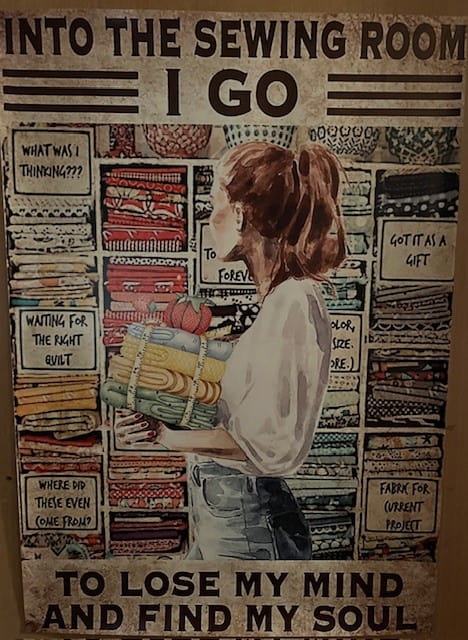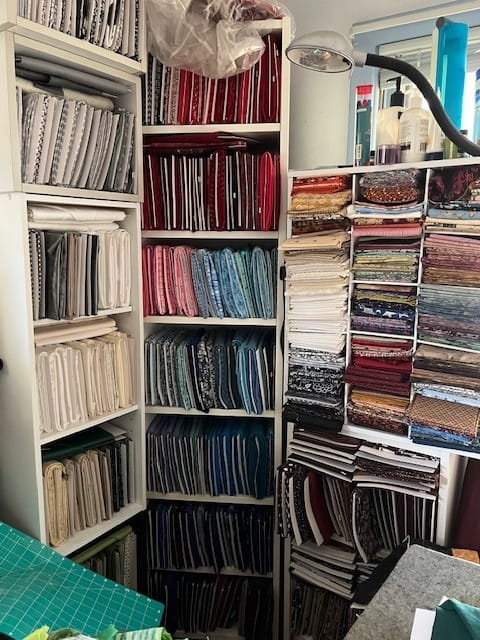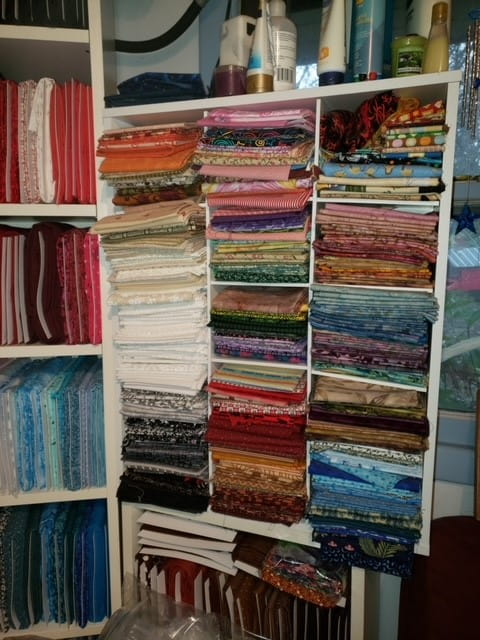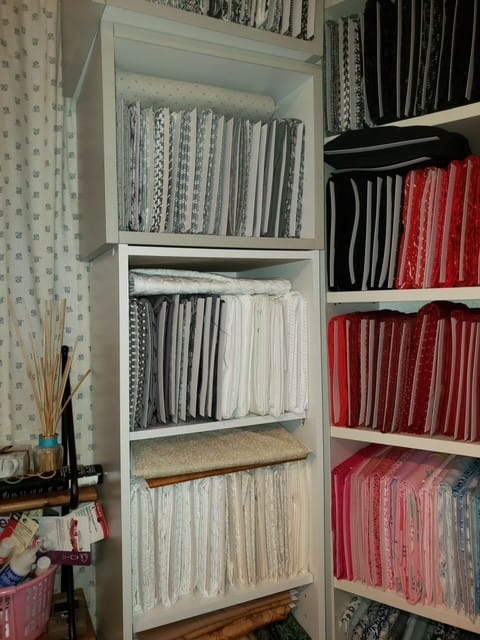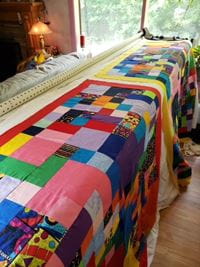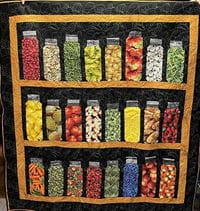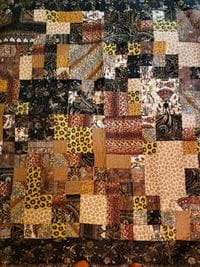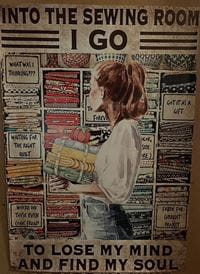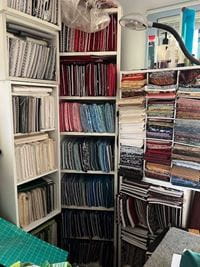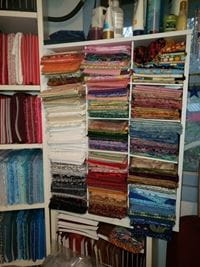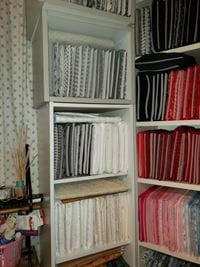Community Impact
Legacy quilter’s art celebrates births, comforts the dying
February 20, 2024
Home > About > News & Media > Story Center
To say Doreen Wood is obsessed with quilting really isn’t an exaggeration. After all, she spent years working a second job at a fabric store to get the employee discount.
“I never got a paycheck because I bought so much fabric,” Doreen laughed.
Doreen, who is an administrative assistant at Legacy Emanuel Medical Center, turned all that fabric into something so much more. Mothers celebrate the birth of their babies with Doreen’s quilts. Those who are dying take comfort in her creations.
Today, we celebrate Doreen’s craft and highlight her work as part of our celebration of Black History Month and the theme of art as a platform for social justice.
In this Q&A, Doreen talks about what drew her to quilting, how its impacted her life and how she wants people to enjoy her quilts.
“I never got a paycheck because I bought so much fabric,” Doreen laughed.
Doreen, who is an administrative assistant at Legacy Emanuel Medical Center, turned all that fabric into something so much more. Mothers celebrate the birth of their babies with Doreen’s quilts. Those who are dying take comfort in her creations.
Today, we celebrate Doreen’s craft and highlight her work as part of our celebration of Black History Month and the theme of art as a platform for social justice.
In this Q&A, Doreen talks about what drew her to quilting, how its impacted her life and how she wants people to enjoy her quilts.
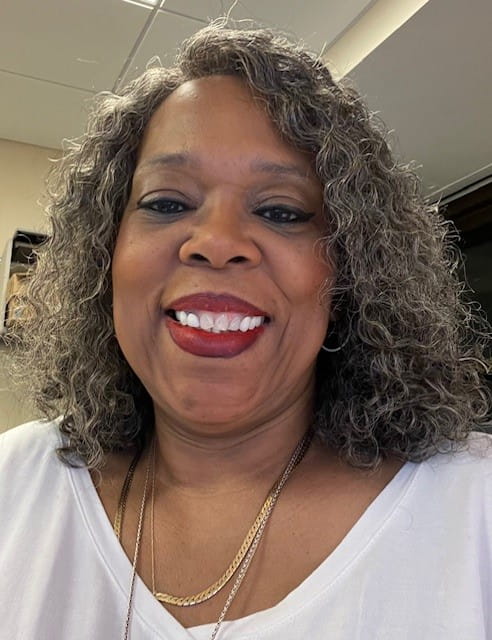
How did you start quilting?
I started sewing when I was 8 or 9 to learn how to make my own clothes and for my Barbie doll. I had two daughters and made a lot of their clothes. I had a lot of scrap fabric left over that I’d send to their school for art projects, but that stopped by the first grade.
My daughter, who was learning to quilt, suggested I learn. But I thought, why would I take large pieces of fabric, cut them into smaller pieces and then put them back together? I ended up taking my first quilting class 20 years ago at a senior center in Scappoose. Nobody looked like me.
The instructor taught us how to cut fabric into squares and if you have an uneven piece, cut those and sew them together. I thought that was cheating. In my head, you sew things together.
Years later, I remember reading an article about quilts from Alabama. None of those quilts are square. That’s how I quilt.
How has your quilting evolved?
I’ve gone from that first quilting class to owning a 20-foot-long arm machine. (A long arm machine lets the operator create elaborate designs either by hand or computer in large formats like bedspreads)
It wasn’t long after I got my long arm machine that I saw a flier at OHSU, where I worked, about compassionate quilting. I learned it’s a group of quilters who make quilts for palliative care patients. I’ve been with that group now for 15 years.
How do you create the design for your quilts?
I let the fabric talk to me. I have a large laundry basket of scraps. One day, I emptied the basket and sorted the scraps by color. I decided to make quilts by color. There were odd shape pieces that looked a lot like the quilts from Gee. It’s how I quilt them that makes a difference.
How have you grown as an artist?
I've stretched myself to try to do something different and new. I saw a quilt that didn’t have a pattern and said I’m going to do that. I bought the fabric and made a quilt that looks like a pantry full of canning jars. I pieced it together with no measurements. My daughter bought the quilt to give to her friend who started home canning.
What impact has quilting had on your life?
I’ve met a lot of people, interesting people. When I first started with the quilting group, I can be shy at times. I later became part of the executive committee of the group. At one of the annual retreats, we talked about what made us grateful.
I talked about how I ran across a nurse one day with one of my quilts. It was going to a homeless man that everyone on the unit liked. I was told by one of the committee members that there was more to the story. When the gentleman passed, they found his sister and gave her the quilt. It was so very touching. I like that. Somebody is getting something they can use and make them feel at home.
How has your form of art helped or had a positive impact on the community?
It brings comfort to those who are dying and joy to people who receive a quilt as a present. There are quite a few babies who have my quilts. It brings a smile. I made a quilt for my daughter when she got married. I t old her it’s a utility quilt I expect you to use them.
So, do you consider your quilts art?
It is art. It is art. I am making a couple of quilts for wall hangings. But I want people to use my quilts.
Why do you think it’s essential that we have more Black artists represented?
Because we’re always in the background. It’s not just Black, it’s people of color. We’re not out there in the public.
What are some of your proud moments as an artist?
I don’t know if I’ve had it yet. I like when I can touch people. I had a boss that I didn’t think liked me until I was out sick for a week. Her demeanor turned around when I came back to work. She asked if I wanted to work part time. I gave her a quilt of her Bernese Mountain dogs for Christmas. It made her cry. It wasn’t my intent. Those things make me proud, that they appreciate the workmanship and that there are going to use it.
Any words or encouragement or advice for other Black artists?
To be authentic. To be you, who you are and don’t let anybody tell you what you can’t do. Art isn’t perfect. It’s what you feel and what you want it to be.

